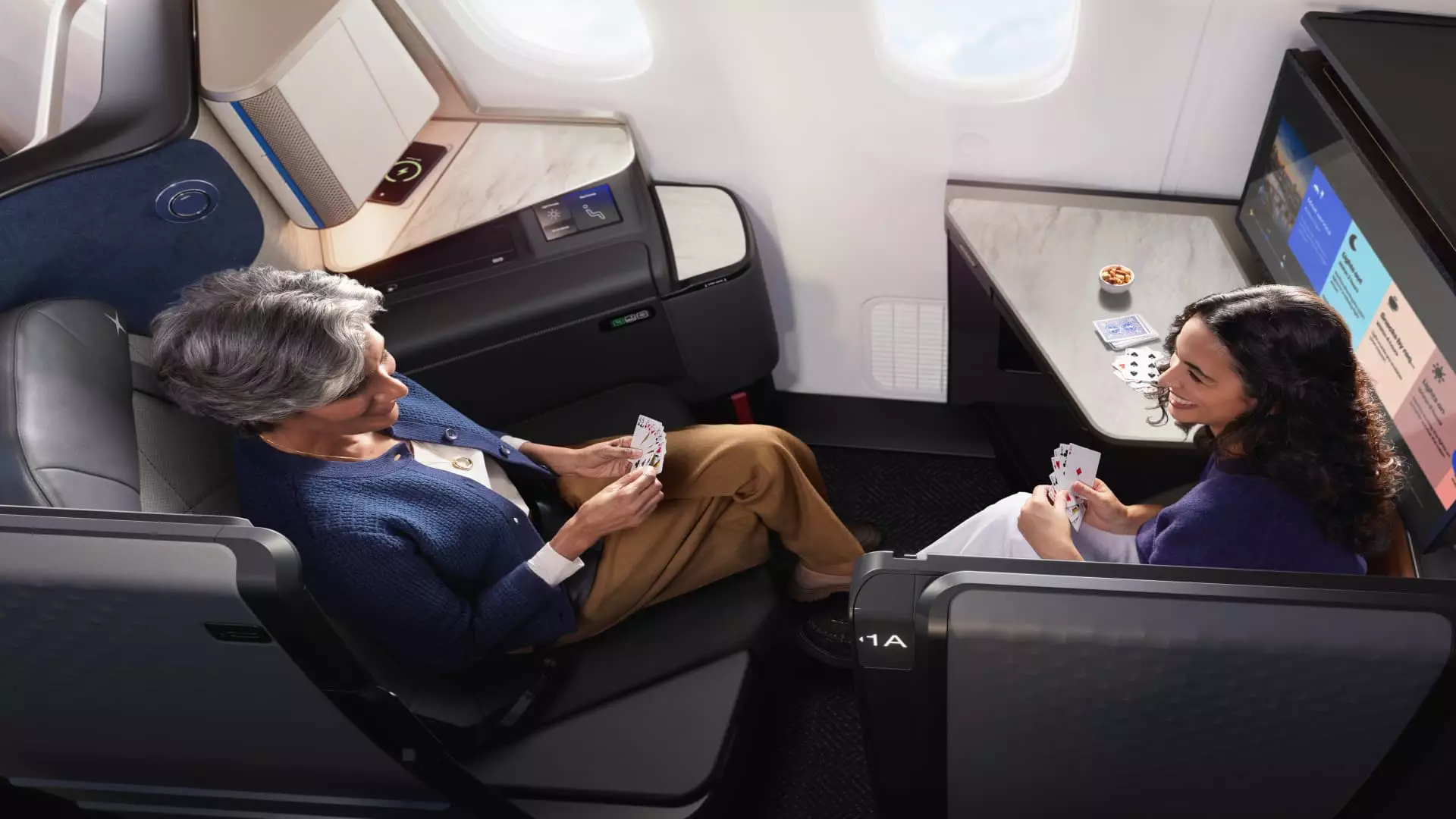In today’s hyper-competitive airline industry, business-class travel has become a battleground where luxury meets strategic marketing. U.S. airlines are investing significantly in their premium offerings, propelling what could be characterized as an arms race for the elite traveler. This extravagant allure of business class goes beyond mere comfort; it creates a lifestyle choice, an emblem of success that many strive to attain. Yet, the underlying question remains: is this breathtaking shift toward plush amenities and exquisite dining truly a step toward better travel experiences or merely a façade masking a more profound malaise within the aviation industry?
The Allure of Luxury Amenities
American Airlines has recently announced its new “suites,” featuring a much-coveted sliding door and amenities such as a “trinket tray” and wireless charging pad. On the surface, these innovations seem not just modern but necessary in attracting wealthier customers who crave exclusivity. United Airlines, not to be outdone, has promised even larger Polaris “studios” that offer enhanced privacy through their own doors and larger screens for entertainment. Each addition—from caviar service to plush bedding—serves a dual purpose: differentiating their service and providing an experience that aims to justify the steep price tags attached.
Yet, amidst this flurry of upgrade announcements, we must inspect the motivations behind such extravagant alterations. Airlines, to an extent, are preying upon the anxieties of consumers who are unhappy with economy class experiences. Robert Mann’s assertion—that “the experience in economy is so bad”—reveals a pivotal truth. Premium services are not merely marketing ploys but potentially necessary evolutions due to increasingly disappointing lower-class experiences.
Economic Realities vs. Premium Demand
Despite the ongoing economic uncertainties and difficulties in the airline sector, executives appear bullish about their premium offerings. They seem to believe that consumers will continue to splurge on luxurious experiences, regardless of broader economic concerns. The numbers indicate that premium seat demand is on the rise: United’s chief commercial officer has outlined ambitious expansion plans for their business class, anticipating a significant increase in premium seats and services by the decade’s end. But can the airline industry truly rely on this so-called resilient “premium demand”?
The reality is, the long-term sustainability of such an investment remains questionable. The pretax margins tell a daunting story: American’s measly 2.1% is in stark contrast to Delta’s more promising 7.6%. Airlines are, in essence, pushing for higher revenues from a smaller pool of customers willing to pay a premium for the perceived value of a superior travel experience. Such dependency on a niche market with fluctuating demand reflects a precarious strategy, one that recognizes not all business travelers have the means to indulge in exorbitant fare prices.
Marketing Masquerades in the Sky
When analyzing the competition among airlines, it’s essential to recognize the interplay between marketing and customer expectations. Some travelers remain skeptical about whether these luxurious upgrades translate into a genuinely enhanced experience. Sure, “free satellite Wi-Fi,” plush bedding, and noise-cancelling headphones add to the perceived value, but they do little to mitigate systemic inefficiencies that plague air travel. Delays, cancellations, and the chronic discomfort of packed cabins remain unresolved, magnifying the societal complaints against commercial airlines.
The luxury being marketed today demands a bit of critical thought. If ample legroom and gourmet dining come at the cost of losing integrity across the board in passenger service and experience, is that worth it? Furthermore, Mann’s insight into the relative indifference travelers feel when delayed—regardless of cabin class—speaks volumes about the disconnect between luxury marketing and the lived airline experience.
The Elusive Reality of First-Class Amenities
The evolving definitions of ‘business class’ and ‘first class’ bring forth an intriguing conundrum. Airlines often muddle these classifications, with some promising facilities and experiences that surpass traditional expectations. For example, Etihad offers “The Residence,” a magnificent living space on an A380 that can command prices exceeding $20,000 for a single journey. However, the allure of these offerings rapidly diminishes when realized that many business-class travelers may remain economically constrained, unable to partake in such opulence.
The question persists: will these altered landscapes of luxury lead to genuine satisfaction among travelers, or is it all but a mirage? The future suggests that while the industry may continue to craft experiences seemingly tailored for the wealthy elite, it must not lose sight of the ever-important average passenger who populates its economy classes. Ultimately, true progress in air travel will necessitate a genuine commitment to enhancing customer experience across all levels, rather than creating new fancier boxes for those who can afford them.

